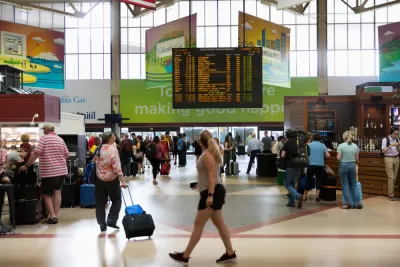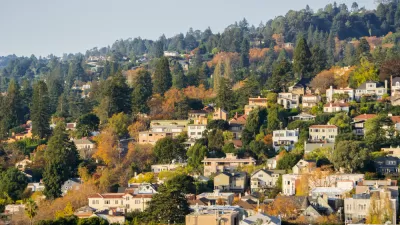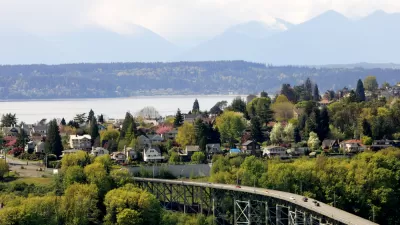A case study from the Boston region shows the power of allowing moderate density on transit adjacent residential parcels currently available only to single-family detached homes.

"[H]igh housing costs and inadequate supply are not a natural outcome of market forces; they are the result of policy choices," according to an article by Sarah Crump, Trevor Mattos, Jenny Schuetz, and Luc Schuster.
The consequences of policy choices are a disconnect between land values and land uses in the Boston region.
Land is very expensive, but the housing is mostly low-density: single-family detached homes with large yards. The Massachusetts Housing Partnership’s TODEX dataset shows that the median housing density near commuter rail stations is 2.8 homes per acre—equivalent to single-family homes on one-third acre lots. This isn’t a market outcome—it’s a sign that zoning is preventing housing markets from working.
This team of writers is presenting a new report that offers a prescription for the rising cost of housing, and resulting social ills, in Boston: loosening zoning restrictions to allow moderate-density housing near transit stations in the region, thus bringing policy and the market in closer alignment.
To allow for more housing to be built in high-demand locations, the state of Massachusetts should adopt a policy that allows moderate-density housing to be built as-of-right within a half mile of transit stations. Moderate-density housing includes duplexes, attached townhouses, and low- to mid-rise multifamily buildings.
To exemplify the affect of such a hypothetical approach to land use regulation in the state of Massachusetts, the article and the report imagines the effect of such policies on land near four commuter rail stations: Beverly Farms, Melrose Cedar Park, Needham Heights, and Wellesley Hills. The results of the experiment show decreasing home prices, and a essential first step toward solving the region's affordability problems.
FULL STORY: Fixing Greater Boston’s housing crisis starts with legalizing apartments near transit

Study: Maui’s Plan to Convert Vacation Rentals to Long-Term Housing Could Cause Nearly $1 Billion Economic Loss
The plan would reduce visitor accommodation by 25,% resulting in 1,900 jobs lost.

North Texas Transit Leaders Tout Benefits of TOD for Growing Region
At a summit focused on transit-oriented development, policymakers discussed how North Texas’ expanded light rail system can serve as a tool for economic growth.

Why Should We Subsidize Public Transportation?
Many public transit agencies face financial stress due to rising costs, declining fare revenue, and declining subsidies. Transit advocates must provide a strong business case for increasing public transit funding.

How to Make US Trains Faster
Changes to boarding platforms and a switch to electric trains could improve U.S. passenger rail service without the added cost of high-speed rail.

Columbia’s Revitalized ‘Loop’ Is a Hub for Local Entrepreneurs
A focus on small businesses is helping a commercial corridor in Columbia, Missouri thrive.

Invasive Insect Threatens Minnesota’s Ash Forests
The Emerald Ash Borer is a rapidly spreading invasive pest threatening Minnesota’s ash trees, and homeowners are encouraged to plant diverse replacement species, avoid moving ash firewood, and monitor for signs of infestation.
Urban Design for Planners 1: Software Tools
This six-course series explores essential urban design concepts using open source software and equips planners with the tools they need to participate fully in the urban design process.
Planning for Universal Design
Learn the tools for implementing Universal Design in planning regulations.
Ascent Environmental
Borough of Carlisle
Institute for Housing and Urban Development Studies (IHS)
City of Grandview
Harvard GSD Executive Education
Toledo-Lucas County Plan Commissions
Salt Lake City
NYU Wagner Graduate School of Public Service





























